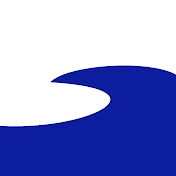I found these kind of cool as an idea, as they can be added rather easily to existing cities and provide some greenery without taking up space, while providing shade:
They probably also need an irrigation system? Or need to be watered daily? They don’t look like they would hold a lot of water when the sun evaporates everything.
It does have an irrigation system. You can see the pipe assembly on the left. It is that big white thing running through. That goes to a water tank, which collects the rainwater from the sails and then pumps it back up when needed.
I see, thanks. You probably mean on the right? It is also explained in the article you linked.
I also have concerns about nutrient cycling, every rain and over watering is going to wash nutrients into the street below. This is an interesting idea, but could use more refinement.
The people below are not getting shaded by or seeing the vegetation tho? If you need shade you can just use the canvas without the plant life and all the other stuff needed to sustain it up there. Actually if this system is intended for narrow streets like this it seems completely unnecessary as the buildings already shade the street. Otherwise if you want plant shade use trees or malleable plants like wines instead of inventing ways to put plants in places they aren’t meant to be.
Also narrow streets do not shade, when you have sun shining from above, which happens every day at noon.
…in the tropics, sure
This is totally dumb. I wouldn’t want one attached to my building. How heavy are they? I’m guessing it doesn’t snow there? How do you weed it when it invariably gets infested with weeds. The irrigation system is sure to break, how do you service that? This will look like absolute shit in a year.
I make canvas and awnings. Shade sails are almost always really stupid. Big bucks for very little bang. Most of the day you end up with a wee thong shadow halfway up the wall
plants give you a better microclimate than just a canvas, because of the controlled evaopration of water. + the air smells nicer with plants around
I wonder how much these weigh?
a lot, those are some real hard working cables
High tension steel cable is strong though, I wouldn’t be very concerned about it. And we have plenty of experience keeping it safe from weathering from using it in all those bridges.
I’d be more worried about the anchor bolts.
I love it!
But I’ve never seen a similar protect (using plants) that could withstand strong winds (100~200km/h).
I mean, the solution is called a self-sustaining forest, but cities don’t like that until post apocalyptic times.
I love it!
– @Evil_Shrubbery
Well yes, you would.
My evil plans of total shadification revealed!!
That doesn’t seem like a great construction method. These seem difficult to maintain which imperils how long thoae awnings and cables will last.
But still a green roof strategy on a more structurally sound awning though? I would be down with that.
Isn’t it the same if people dry their clothes out ?
Cities already have plenty of shadows. That’s why they’re called “concrete canyons”.
People in cities need more sunlight, generally speaking.
Sort of, but sun on concrete tends to result in a lot of extreme heat. Cities sometimes have microclimates a few degrees hotter than the surrounding area just because concrete is so bad at dissipating heat. Plants and trees tend to do a lot to moderate temperatures.
It results in extreme heat on places continually bombarded by sunlight, eg the tops of buildings, and parking lots. Down in the canyons it isn’t as much of a problem.








